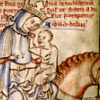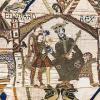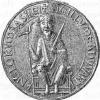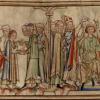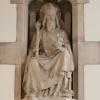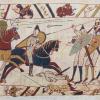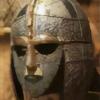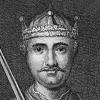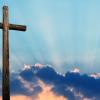Edward the Confessor
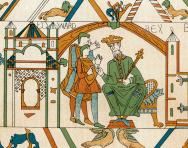
Who was Edward the Confessor?
The last but one of the Anglo-Saxon kings of England, Edward was known for his religious faith (he is known as 'the Confessor' because of his life was characterised by piety and religious belief).
Although England was quiet and relatively prosperous during his reign, his failure to leave an heir led to the Norman invasion of England in 1066.
Top 10 facts
- Edward was the son of King Ethelred the Unready and his wife Queen Emma. He had a brother, Alfred, and a sister, Godgifu, and many half-brothers.
- In 1013 the Danes invaded England and Edward and his family escaped to Normandy. His mother, Emma, was a Norman and daughter of the Duke of Normandy.
- Edward spent almost twenty-five years in Normandy and when he became King many of his closest advisors were Normans.
- Although Edward was the King of England, much of the power rested in the hands of three Saxon Earls: Leofric of Mercia, Siward of Northumbria and Godwin of Wessex. Edward’s favouritism towards his Norman companions upset the Anglo-Saxon Earls.
- Edward disliked the most powerful of the Earls, Earl Godwin, because of the role Godwin had played in the death of Edward’s brother Alfred.
- in 1051 there was a fight between a group of Edward’s Norman friends and the people of Dover. Edward asked Earl Godwin to punish the local people. Godwin refused and had to go into exile. Support for the Godwin family was high and when he returned to England a year later there was little Edward could do.
- Edward was married to Earl Godwin’s daughter Edith but did not wish to have children with her.
- The English throne was not hereditary and the power to appoint new kings lay with the witan, a group of royal advisors. Edward had no right to promise the throne to anyone.
- Edward is said to have promised Duke William of Normandy the throne but then, on his deathbed, may have signalled that he accepted Harold Godwinson’s claim.
- Edward was known for his religious faith and people believed that he could cure the sick simply by touching them. This form of healing is called the king’s touch. After his death the Catholic Church made Edward a saint.
Timeline
- 1003Edward born to King Ethelred the Unready and Queen Emma
- 1013Sweyn Forkbeard seizes the throne; Edward goes to live in Normandy to escape Danish invasion
- 1014Ethelred reinstated as English King
- 1016Death of Ethelred the Unready; Edmund Ironside becomes King; Canute becomes King
- 1017Queen Emma marries King Canute
- 1027Birth of William, natural son of the Duke of Normandy
- 1035Death of King Canute
- 1037Harold becomes King
- 1040Death of Harold, Harthacanute becomes King
- 1041Edward returns to England
- 1042Death of Harthacanute; Edward becomes King of England
- 1045Edward marries Edith, daughter of Earl Godwin
- 1051Edward banishes Earl Godwin after the Dover incident
- 1052Earl Godwin returns to England
- 1053Death of Earl Godwin; his son Harold Godwinson becomes Earl
- 1064-1065Harold Godwinson visits Normandy and recognises William’s claim to throne
- January 1066Death of Edward; Harold Godwinson becomes King
- October 1066Battle of Hastings; Death of Harold Godwinson
- December 1066William the Conqueror becomes King
- 1161Edward declared a saint by Pope Alexander III
- 1348St George replaces Edward as patron saint of England

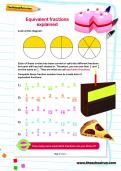
Boost Your Child's Learning Today!
- Start your child on a tailored learning programme
- Get weekly English & maths resources sent direct to your inbox
- Keep your child's learning on track
Did you know?
- Edward loved to hunt and went hunting every day after church.
- He commissioned the building of Westminster Abbey and was later buried there.
- Edward is the patron saint of difficult marriages.
- He was known for his visions and for flying into violent rages.
- When he fell out with her father, Edward sent his wife Edith to live in a convent.
- Edward is the only King of England to have been canonised (made a saint by the Catholic Church). A "Confessor" is a type of saint.
Look throught the gallery and see if you can spot the following:
- Edward as a baby with his mother Queen Emma
- King Edward as depicted in the Bayeux Tapestry
- A seal featuring Edward the Confessor
- Illustration showing Edward returning to England and his coronation
- A statue of Edward the Confessor
Gallery
About
Historians still argue about whether or not Edward was a good king. He was certainly a popular choice for king having been elected by the witan, or royal council, and had the backing of the people. He was respected for his religious faith and people believed that he could cure the sick through the king’s touch.
England was quiet and prosperous during Edward's reign. He lived relatively modestly at his own expense and so taxation was light.
Edward can also be seen as a weak and indecisive and sometimes violent leader whose failure to leave an heir led to the Norman invasion of Britain and the end of Saxon rule. Having spent so long in Norman France he was heavily influenced by Norman advisors who he appointed to positions of power at court and within the church. This annoyed the Saxon earls and put him into conflict with the powerful Earl Godwin. Towards the end of Edward’s reign the Godwins were effectively running the country. Edward preferred to spend money on religion rather than defence of the realm and so left the country vulnerable to invasion.
William of Normandy claimed that Edward had promised to make him heir to his throne. It may be that no such promise was made and the claim was simply Norman propaganda, but it is equally possible that Edward, who had spent so much of his life living in Normandy, did promise to make William his heir. Edward did not have the right to make this promise. Harold Godwinson had shown himself to be a competent and efficient leader and was the popular choice. The death of Harold at the Battle of Hastings marked the end of Anglo-Saxon England and left William free to enforce Norman rule.
King Edward established Westminster Abbey close to his royal palace by enlarging small Benedictine monastery founded around 960; a new stone church in honour of St Peter the Apostle was built. It was known as the "west minster" to distinguish it from St Paul's Cathedral (the east minster) in the City of London. When the church was consecrated on 28 December 1065 King Edward was too ill to attend and he died a few days later. Though King Edward's remains are buried in Westminster Abbey, it now looks very different to the church he would have known; the only traces of the original building are in the round arches and massive supporting columns of the Abbey's undercroft.
Related Videos
Just for fun...
Cut out and arrange pictures and captions in this Bayeux Tapestry Exercise to put them in the right order, staring with Edward the Confessor's death
Best children's books about Edward the Confessor and 1066
Find out more
Look through a copy of the Domesday Book, the Abbreviato, to see how scenes from Edward the Confessor's life are shown in the Illuminated manuscript
Read about the four claimants to the English throne after Edward the Confessor's death
Use an interactive guide to the events of 1066 from BBC Bitesize
See coins from the time of Edward the Confessor, with his image on
Edward appears in various scenes of the Bayeaux Tapestry: we can spot him talking to his brother-in-law Harold, Earl of Wessex, talking to Harold and looking frail and ill, then the Tapestry reverses the scenes of his death and his burial so we see his funeral procession to Westminster Abbey, in bed talking to his followers, including Harold and Queen Edith and shown dead with a priest in attendance.
Find out more about why Edward was known as the Confessor
Images of Edward (as picured in the Litlyngton Missal) and his shrine in Westminster Abbey
Facts about Edward the Confessor from Kiddle
See for yourself
- Visit Edward’s tomb in Westminster Abbey
- Visit Ely Cathedral where Edward spent his early childhood
- View a Victorian copy of the Bayeux tapestry at Reading Museum
Also see

Give your child a headstart
- FREE articles & expert information
- FREE resources & activities
- FREE homework help

